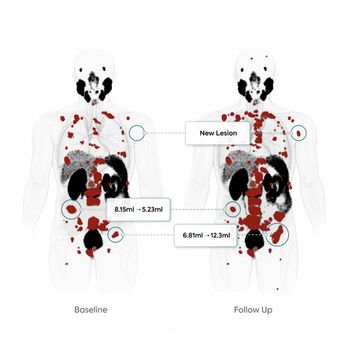
CAD helps inexperienced readers with CT colonography
New computer-aided detection programs help less experienced readers find clinically significant polyps with CT colonography, but they prove less useful for experts, according to three studies presented at the ECR on Saturday.
New computer-aided detection programs help less experienced readers find clinically significant polyps with CT colonography, but they prove less useful for experts, according to three studies presented at the ECR on Saturday.
CT colonography has shown great promise in colon cancer detection, and it has been touted as a possible replacement for the dreaded colonoscopy.
Obstacles to greater use of this alternative include differences in reader performance. Research in Europe suggests that CAD narrows the gap between less experienced readers and radiologists who are experts in the procedure.
One study by researchers at the Medical University in Vienna compared the effect of CAD as a second reader on lesion detection with CT colonography performed on a 16-slice system by readers with different levels of experience.
The study involved 36 patients, 52 multislice CT data sets, and 55 endoscopically confirmed polyps greater than 5 mm in size. Cases were reviewed by two inexperienced radiologists and two experienced radiologists on a 3D workstation. Two-D views were also used for lesion confirmation. CAD then provided a second read.
The inexperienced readers demonstrated sensitivities of 76% and 75%, whereas the two experienced radiologists both had a sensitivity of 91%.
CAD boosted performance by inexperienced readers to 91% and 95%, while the expert readers' sensitivity for detection of polyps increased by a smaller margin to 96% and 93%. CAD also decreased false-positive rates for the inexperienced readers.
"CAD increases polyp detection for all readers, with clinically significant increases for inexperienced readers," said Dr. Thomas Mang.
Another study was performed at Pitie-Salpetriere Hospital in Paris between September 2003 and February 2006. Researchers compared CT colonography versus colonoscopy in 40 patients who underwent both procedures without fecal tagging. Performance of a senior versus a junior radiologist were compared for detection of clinically significant lesions.
In the study group, 35% of patients had 19 lesions measuring over 6 mm on colonoscopy. Sensitivity for the expert improved from 89.4% to 94% with CAD, while the inexperienced reader saw a much larger improvement in sensitivity, from 52.6% to 73.3%.
"CAD increased sensitivity of CT colonography to detect colon polyps. CAD's effect was greater with the beginner reader," said Dr. M Cadi.
The third study, conducted at University of Muenchen in Germany, looked at 105 patients who underwent CT colonography for colon cancer screening on a 64-slice system. A prototype CAD program, which is now commercially available, provided a second opinion following diagnosis by an expert radiologist. Results were presented by Dr Anno Graser.
Ninety-eight polyps were found in 42 patients, including small (less than or equal to 5 mm), medium (6 to 9 mm), and large (greater than or equal to 10 mm) polyps.
CAD alone detected 69 polyps, giving it an overall sensitivity of 70%, with an average 2.2 false positives for each CT data set. CAD's sensitivity was 51% for small lesions, 94% for medium-sized lesions, and 87% for large polyps.
By comparison, an experienced radiologist had an overall sensitivity of 90%, finding 88 of 98 polyps. Sensitivity was 84% for small lesions, 94% for medium-sized lesions, and 93% for large polyps.
"CAD was significantly worse [than experienced radiologists] in small lesions but pretty high for medium- and large-sized lesions. CAD shows promise for detection of clinically significant polyps," Graser said.
Newsletter
Stay at the forefront of radiology with the Diagnostic Imaging newsletter, delivering the latest news, clinical insights, and imaging advancements for today’s radiologists.




























